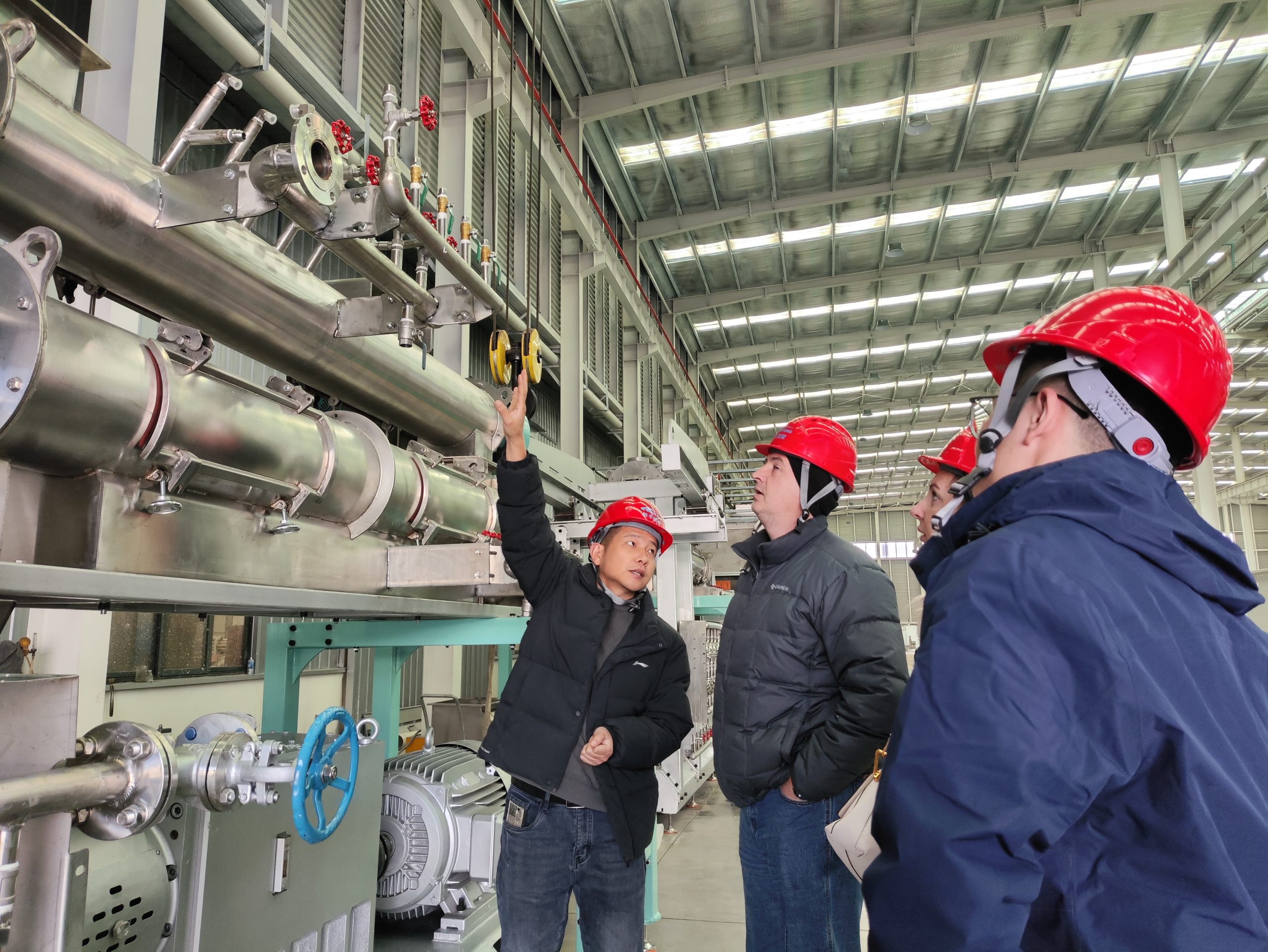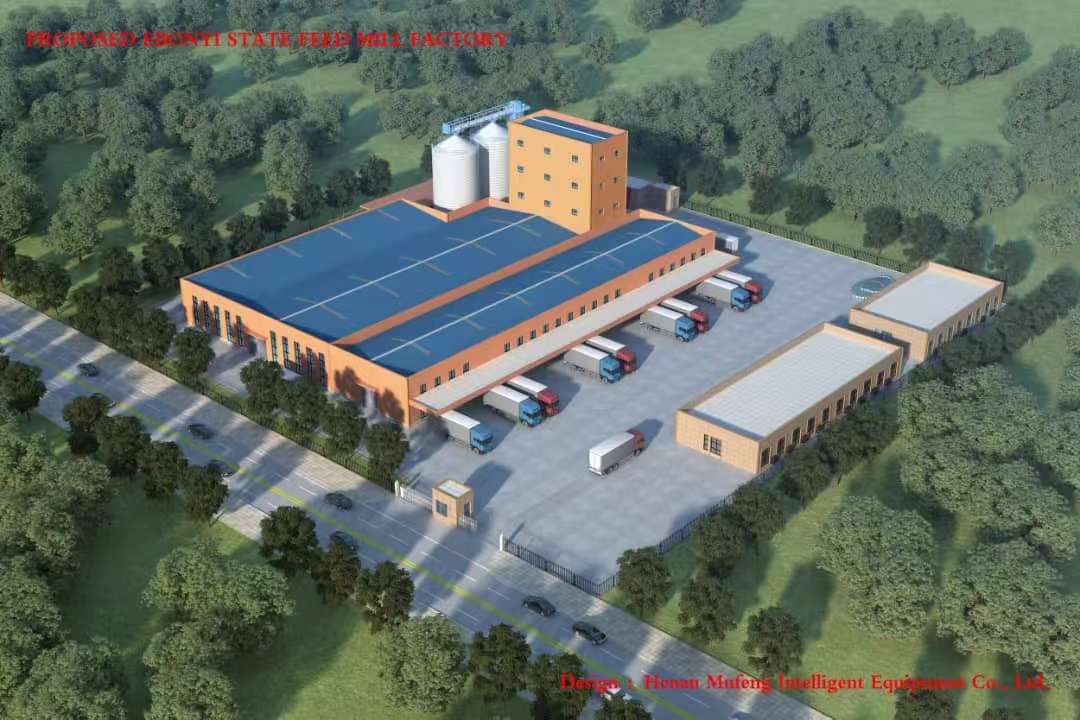1.1 Impact on Digestibility
1.1.1 Pigs
Reducing the particle size of feed ingredients can improve the digestibility of dry matter, energy, and protein from corn or sorghum in weaned piglets. This is because reducing the particle size increases the contact area between digestive enzymes and feed particles, enhancing the mixing of feed with digestive enzymes. However, excessively small particle sizes may have negative effects, such as increasing the risk of gastric diseases like gastric ulcers. During the growing and finishing stages of pigs, an appropriate particle size can also improve feed digestibility. For example, reducing the particle size of corn from a larger value to 500-600 microns can enhance its digestion and absorption in the pig’s intestines, enabling pigs to better utilize nutrients in the feed.
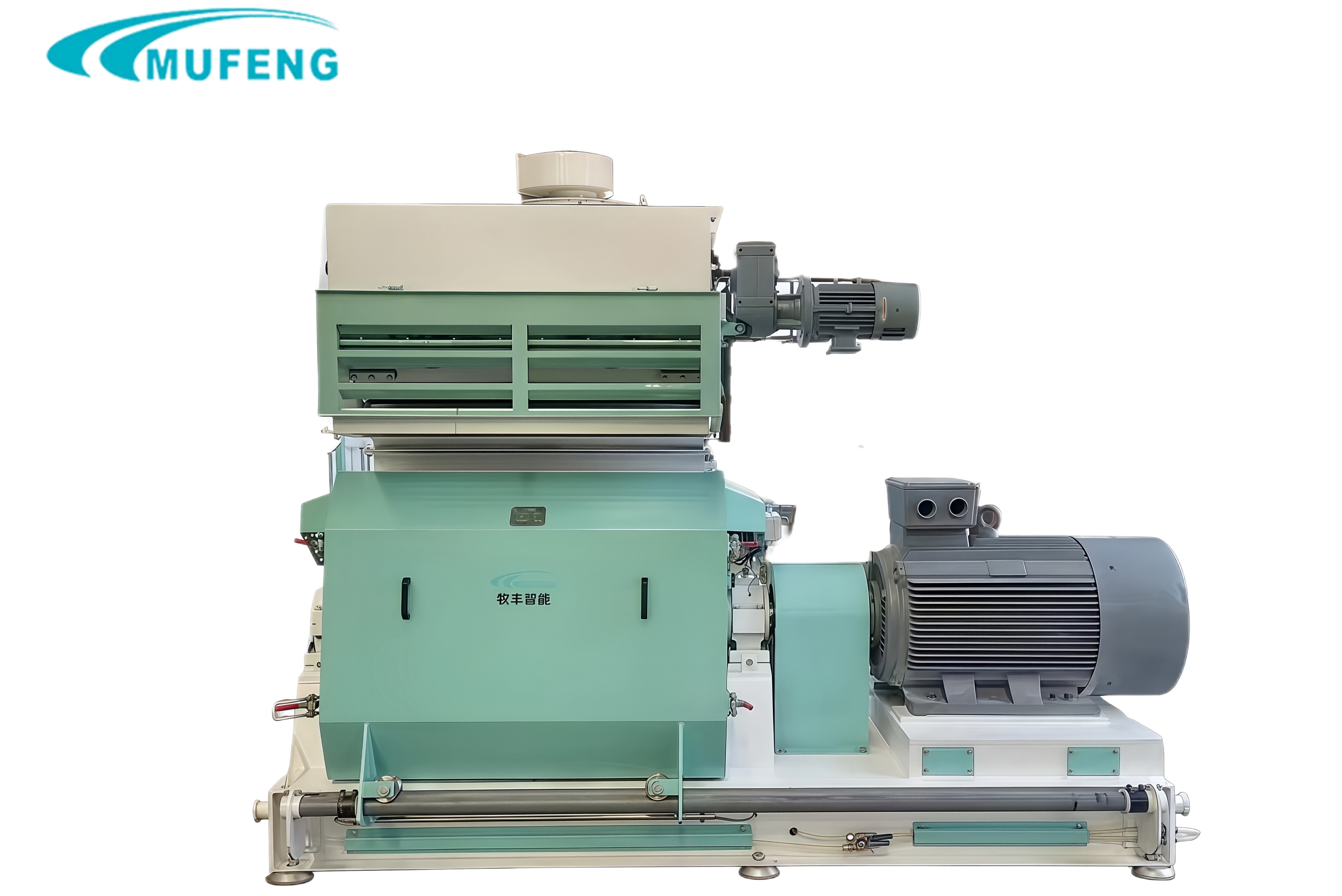
1.1.2 Chickens
If chicken feed is ground too finely, it will lead to insufficient chewing by chickens, uneven mixing with saliva, and hinder digestion. An appropriate particle size allows chickens to better consume and digest the feed. For instance, grinding wheat and barley to below 2.5 millimeters and processing corn into powder form helps chickens fully mix the feed with saliva during consumption, making it more susceptible to the action of digestive enzymes in the gastrointestinal tract, thereby improving feed digestibility.
1.1.3 Cattle and Sheep
For ruminants such as cattle and sheep, appropriate coarse grinding is beneficial for rumination activities, promoting the fermentation and decomposition of feed by rumen microorganisms and improving digestibility. However, for elderly and weak cattle and sheep, grinding the feed more finely can compensate for their reduced chewing and digestive abilities, enabling them to better digest the feed and absorb nutrients. For example, grinding the feed of elderly sheep to within 1 millimeter can significantly improve their digestion and absorption of nutrients in the feed.
1.1.4 Aquatic Animals
The smaller the particle size of aquatic feed, the larger the surface area in contact with digestive enzymes, and the higher the digestibility of nutrients. For example, grinding freshwater fish feed ingredients to approximately 0.425mm (40 mesh) can improve the digestion and absorption efficiency of the feed in fish, reduce feed waste, and minimize pollution to the water environment. A suitable grinding fineness can also enhance the stability of aquatic feed in water, making it less likely to disintegrate and facilitating ingestion by aquatic animals.
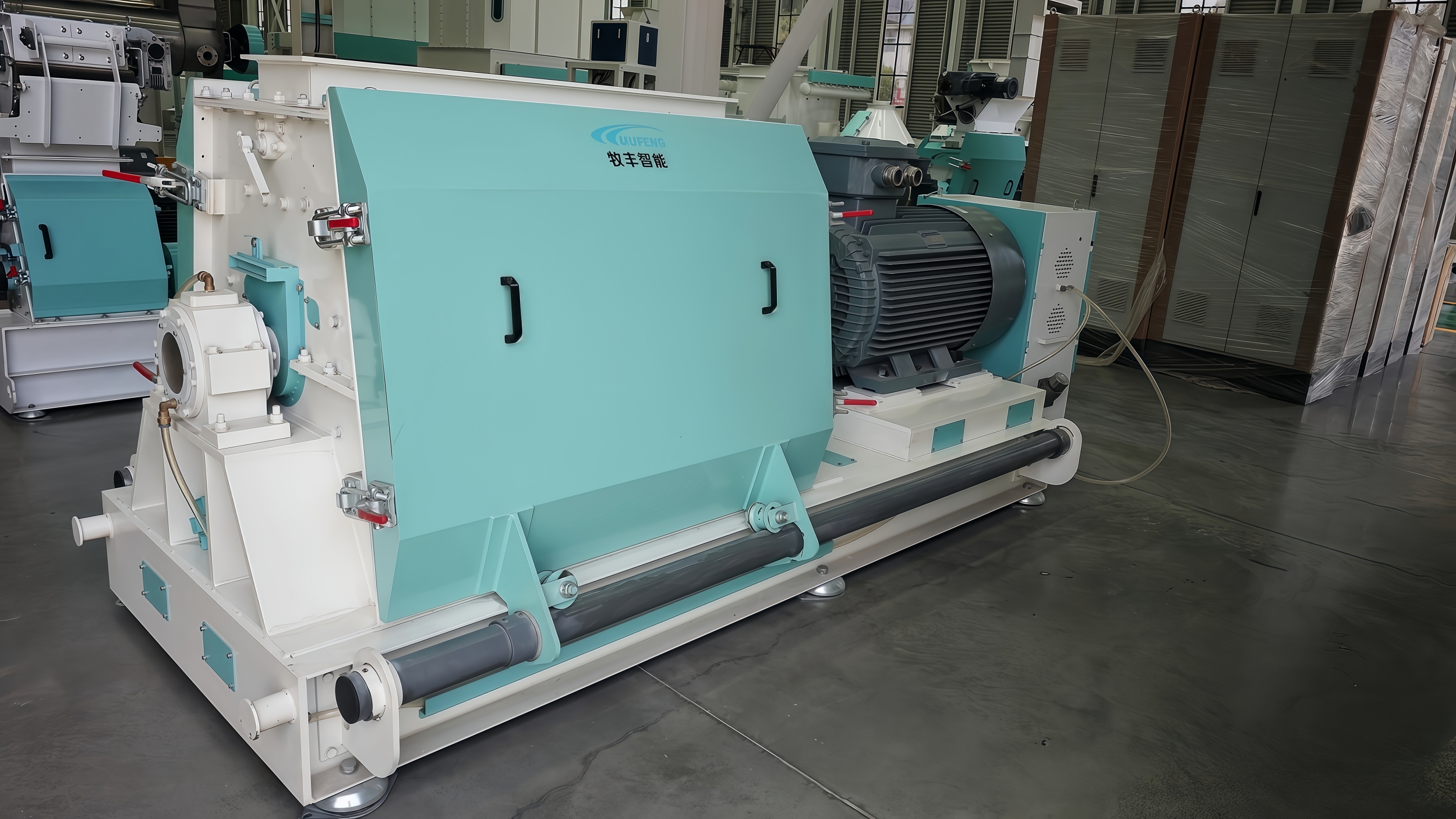
1.2 Impact on Growth Rate and Feed Conversion Ratio
1.2.1 Pigs
During the piglet stage, an appropriate grinding fineness can promote piglet growth and improve feed conversion ratio. For example, processing corn and soybean meal into piglet feed with a suitable particle size (0.6-1.0 millimeters) can accelerate the growth rate of piglets and reduce the feed-to-meat ratio. In the growing and finishing stages, studies have shown that for every 100μm decrease in corn particle size, the G:F (gain-to-feed ratio) of growing pigs can increase by 1.3%. When the corn particle size is reduced from 800μm to 400μm, the G:F of pigs increases by 7%. In the sow stage, reducing the particle size of grains can increase the digestible energy intake of sows, thereby improving litter weight gain. However, if the grinding particle size is too fine, it may lead to a decrease in pig feed intake, which in turn affects growth performance.
1.2.2 Chickens
The grinding fineness of chicken feed affects their feeding and digestion, thereby influencing growth rate and feed conversion ratio. For example, in broiler breeding, feed with an appropriate particle size allows broilers to eat smoothly and digest well, promoting their rapid growth and improving feed conversion ratio. If the feed particle size is inappropriate, such as being too coarse, it may cause difficulty in chicken feeding and insufficient nutrient intake; if it is too fine, it may affect chicken digestion, reducing growth rate and feed conversion ratio.
1.2.3 Cattle and Sheep
For cattle and sheep, a suitable feed grinding fineness helps improve their growth rate and feed conversion ratio. For fattening cattle, moderately grinding grains before feeding can improve their utilization of feed, promote growth, and shorten the fattening cycle. For sheep, providing feed with an appropriate grinding fineness at different growth stages can meet their nutritional needs, improve growth performance, and reduce breeding costs.
1.2.4 Aquatic Animals
The grinding fineness of aquatic feed has a significant impact on the growth rate and feed conversion ratio of aquatic animals. In shrimp and crab farming, grinding feed ingredients to a fineness that meets the requirements of their growth stage can enable shrimp and crabs to grow rapidly and improve feed conversion ratio. For example, grinding Macrobrachium rosenbergii feed to approximately 0.25mm (60 mesh) can significantly improve the growth rate and feed utilization of Macrobrachium rosenbergii, increasing breeding income.
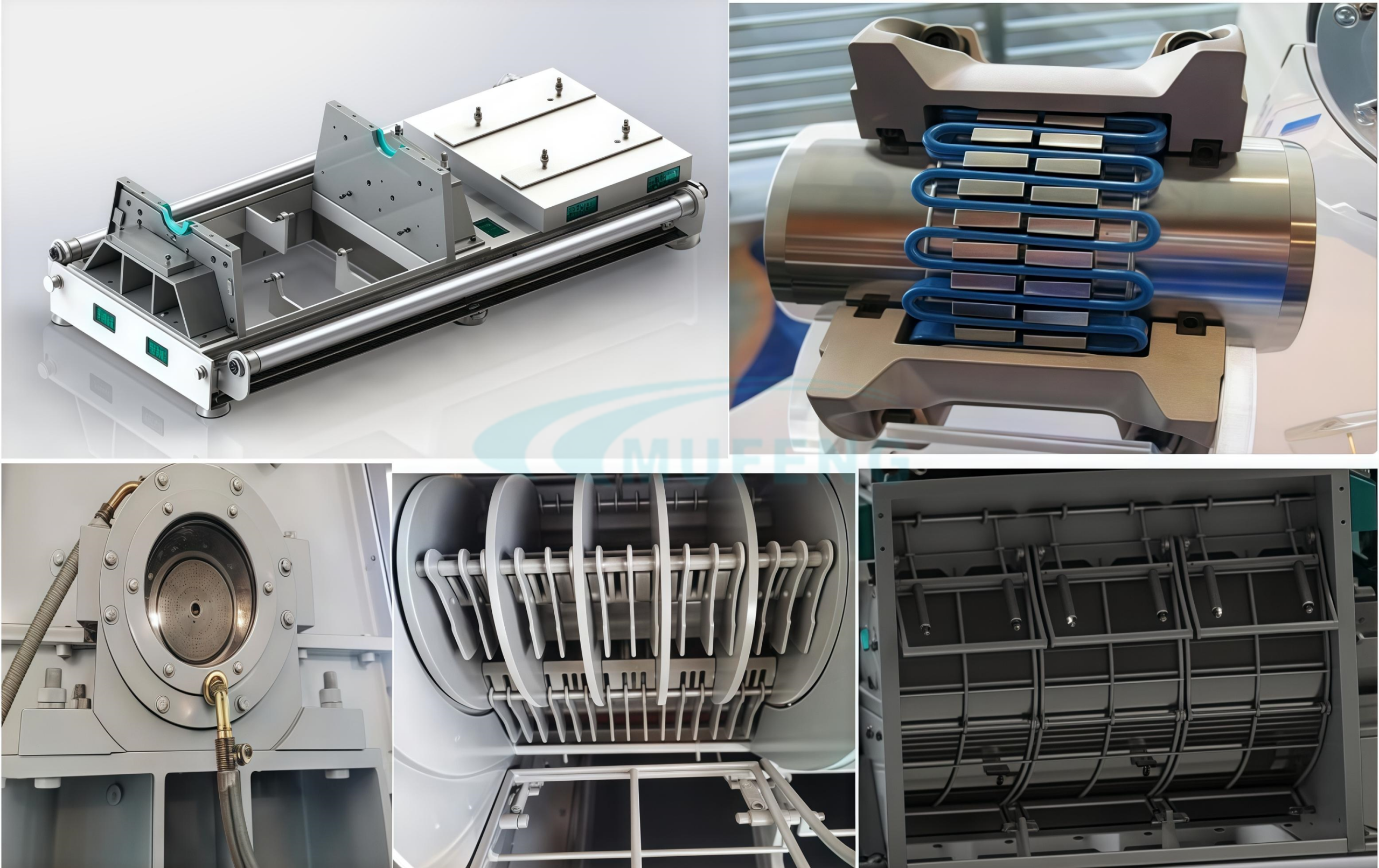
1.3 Impact on Animal Health
1.3.1 Pigs
Excessively small feed grinding particle size is one of the inducing factors for gastric ulcers in pigs. Reducing the corn particle size from 1200μm to 400μm or from 865μm to 339μm can both lead to an increase in the incidence of gastric ulcers in pigs. After pigs develop gastric ulcers, they are susceptible to Helicobacter infection, which affects their health. Therefore, in pig feed production, it is necessary to control the grinding fineness to avoid the harm caused by excessively small particle sizes to pig health.
1.3.2 Chickens
Overly fine feed may cause respiratory diseases in chickens because overly fine feed produces more dust, and chickens are prone to inhaling dust during feeding, which irritates the respiratory tract. Maintaining an appropriate feed grinding fineness can reduce dust generation, lower the incidence of respiratory diseases in chickens, and ensure their health.
1.3.3 Cattle and Sheep
For cattle and sheep, improper feed grinding fineness may affect their rumination function, thereby impacting their health. Overly fine feed is not conducive to rumination in cattle and sheep and may cause diseases such as ruminal impaction and bloat. Ensuring that the feed grinding fineness meets the digestive physiological characteristics of cattle and sheep is crucial for maintaining their health.
1.3.4 Aquatic Animals
Inappropriate grinding fineness of aquatic feed may affect the stability and palatability of the feed in water, thereby influencing the health of aquatic animals. If the feed particles are too large, aquatic animals have difficulty ingesting them; if the feed is ground too finely, it may cause the feed to disintegrate quickly in water, resulting in the loss of nutrients and potentially affecting the intestinal health of aquatic animals. Therefore, it is necessary to strictly control the grinding fineness of feed according to the species and growth stage of aquatic animals.
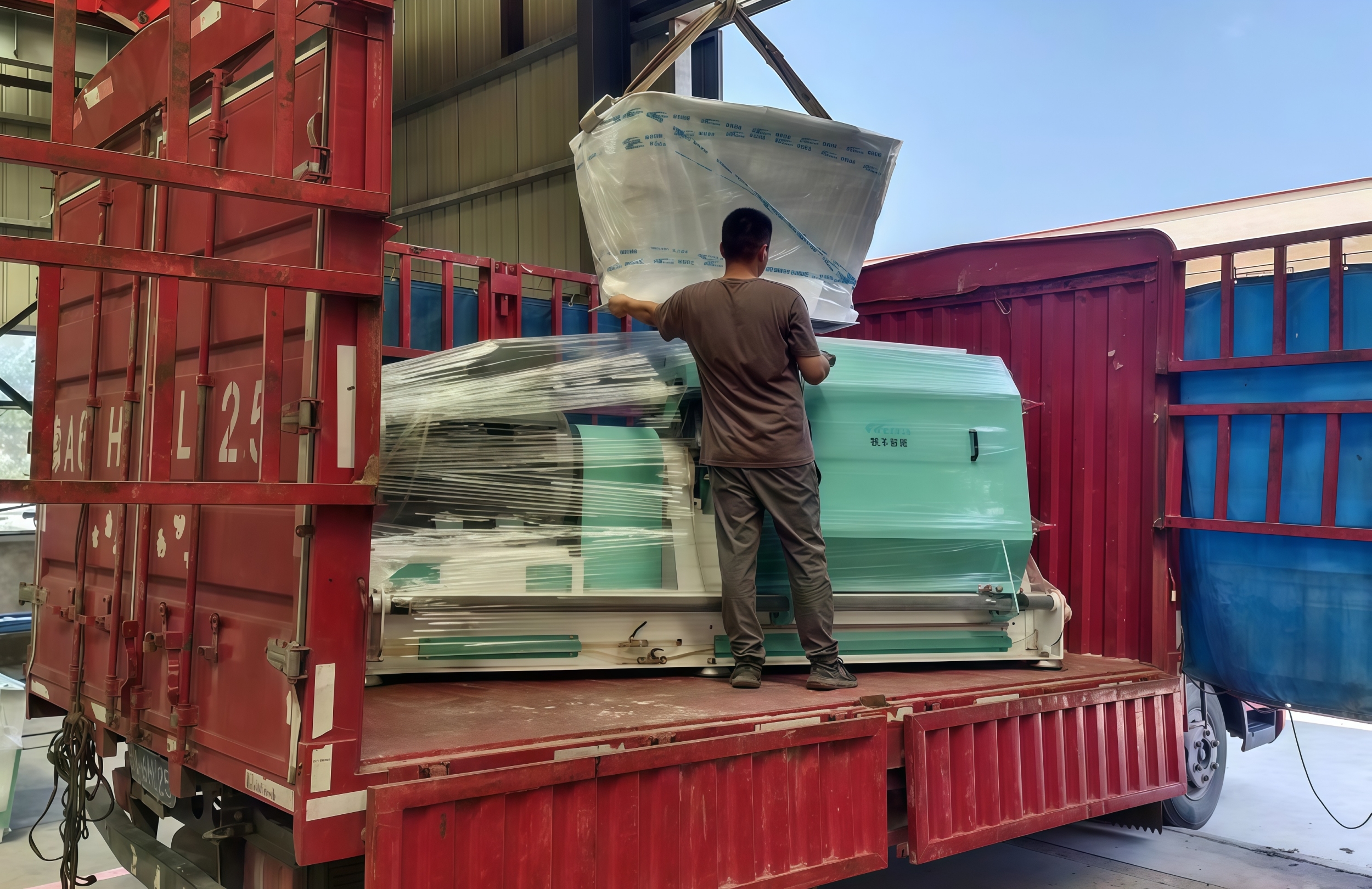
Different feeds have specific requirements for grinding fineness for different animal species and different growth stages of the same animal species. A suitable grinding fineness can significantly improve the digestibility of feed by animals, promote animal growth, improve feed conversion ratio, and ensure animal health; while improper grinding fineness will have a negative impact on animal growth performance, increase breeding costs and the risk of animal diseases. In actual breeding production, full consideration should be given to the animal species, growth stage, and the characteristics of feed ingredients, and the grinding fineness of feed should be reasonably controlled to achieve scientific breeding, improve breeding efficiency, and promote the sustainable development of animal husbandry and aquaculture. In the future, with the continuous deepening of research on animal nutrition, it is expected to further optimize the standards for feed grinding fineness, providing more precise technical support for animal breeding.
–Henan Mufeng Intelligent Equipment Co., Ltd.
Yang yaohui
Whatapp:+86 15638502590
